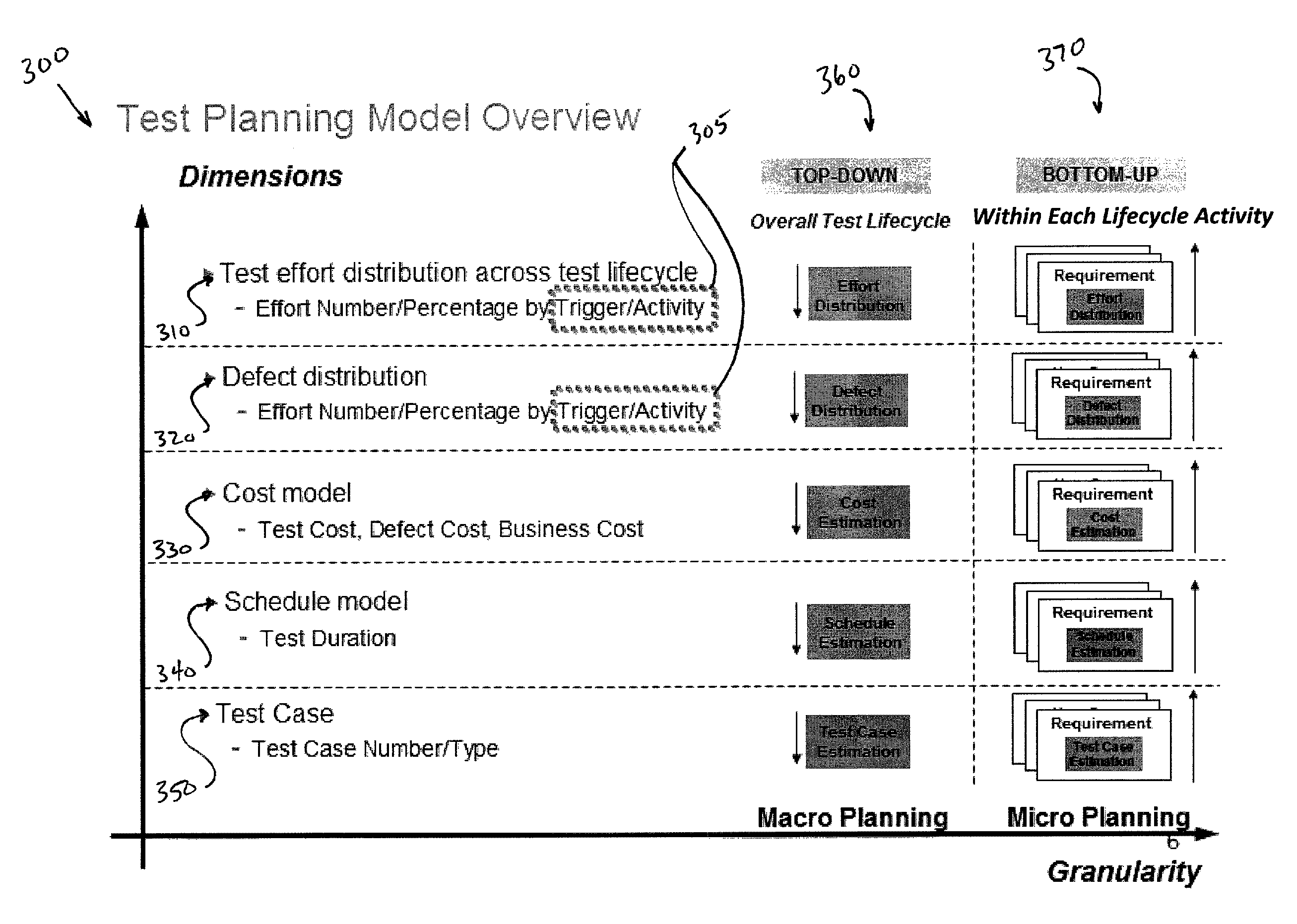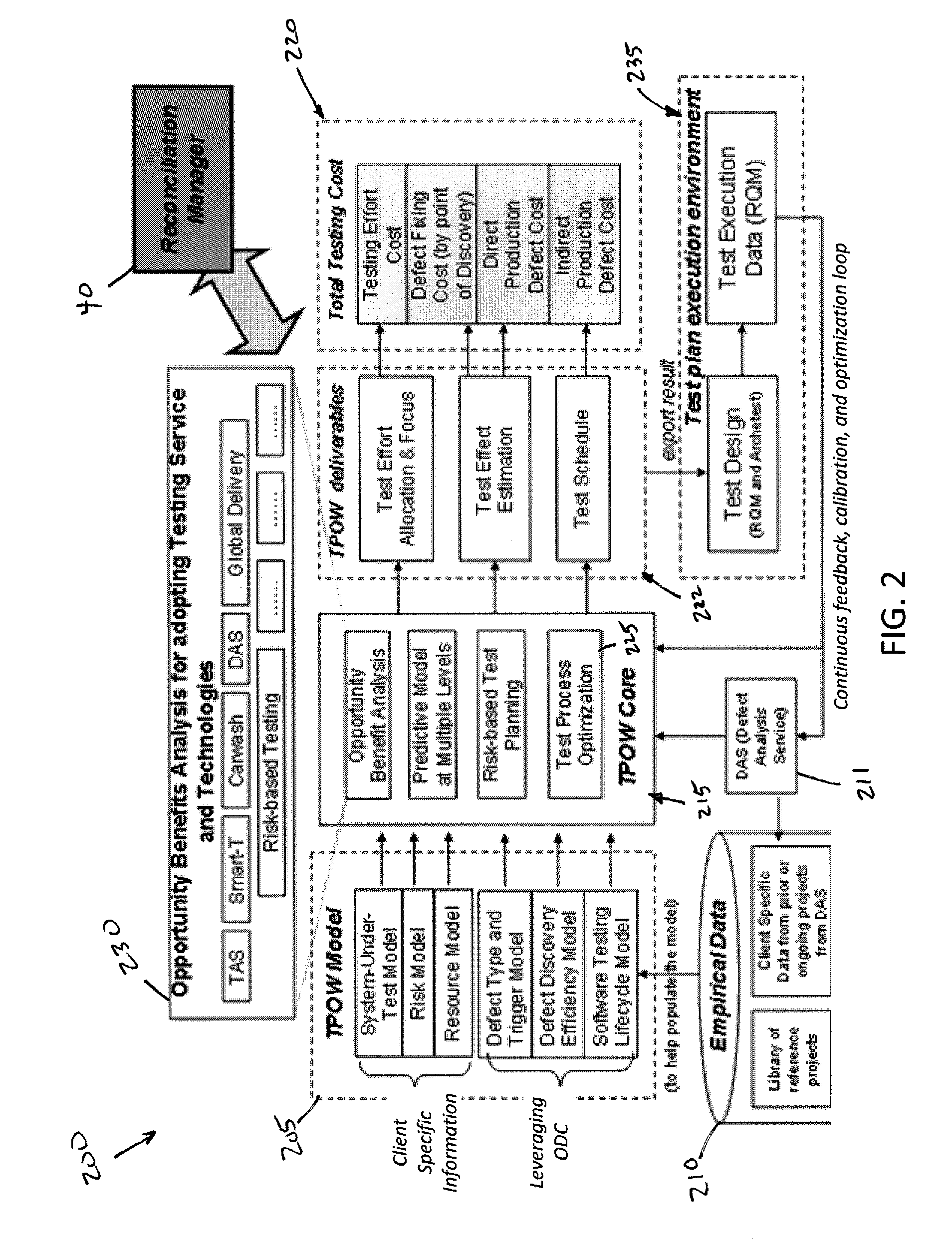While software systems continue to grow in size and complexity, business demands continue to require shorter development cycles.
This has led some software developers to compromise on functionality,
time to market, and quality of software products.
Furthermore, the increased schedule pressures and limited availability of resources and skilled labor can lead to problems such as incomplete design of software products, inefficient testing,
poor quality, high development and maintenance costs, and the like.
This may lead to poor customer satisfaction and a loss of market share for companies developing software and other products.
Moreover, as the
software development lifecycle proceeds from high level requirements /
design review to user acceptance test, costs for detecting and remedying software defects generally increases, e.g., exponentially.
The challenges to macro planning frequently include the ability to find a sufficiently similar historical project on which to base planning decisions for the current test project.
However, given the pace of schedules, it is increasingly challenging for projects to produce accurate, timely, and cost effective micro plans.
As a result, macro plans and micro plans often do not synchronize with one another due to several factors.
For example, micro plan test activities do not necessarily map to those defined in the macro plan due to overlapping schedules required by schedule pressure, shared test environments required by limited infrastructure, or other constraints that frequently are only identified after macro planning is complete.
This can lead to stark differences between the macro and micro plans.
No existing macro or micro tools are designed to integrate with one another, and no integrated tool currently exists.
Due in part to the disjointed nature of test planning described above, a majority of defects are often found later in the life cycle where the cost to fix such defects increases exponentially with time.
Test projects are planned inefficiently and / or ineffectively because there is no solution that provides the real time insight necessary to find and fix defects as early as possible.
Although scheduling software can help allocate resources on simple projects, the task of optimally
staffing test execution projects is a more complex problem to solve due to the unknown
impact of blocking defects resulting from test dependencies.
If test
resource allocation is not carefully constructed and maintained, a test project can very quickly find themselves in a situation where multiple resources may be delayed or blocked entirely from making any progress for unacceptably long periods of time.
In these cases, test costs relative to benefits received are significantly higher than they should be, and the negative
impact to cost and schedule is typically severe.
Conventional test planning tools and methods do not provide a mechanism to model alternative test
scenario planning for the purposes of comparing them and determining the optimal balance of cost, risk, quality and schedule.
As a result, “what if” alternative test planning typically is not performed by most projects since it is largely a manual task and too labor intensive to be delivered in real time for projects to benefit from the information.
Moreover, there is no model in the industry that is capable of predicting the number, severity, and cost of defects.
Furthermore, the differences between historic project information and the current project frequently result in inaccuracies between projections based on historical data compared against the actual current project results.
Even further, the approach of using historical projects for
estimation provides no guidance or useful insight into how to best adjust plans while the project is underway to reflect changed conditions.
As a result, detailed
estimation planning and / or ongoing calibration is rarely actually performed on many of the large and complex efforts that would most benefit from it.
Additionally, there are no industry wide models available to provide appropriate expected distributions of defects uncovered in
System Integration Testing (SIT).
As a result, SIT testing tends to be one of the most expensive kinds of testing relative to the benefit received.
As a result of the above-noted difficulties in test planning, macro plans and micro plans, if created at all, are often
set aside and ignored soon after their creation.
However, as problems arise and real actions inevitably deviate from the plans, an escalation can occur where one deviation from the plans leads to another deviation which leads to another, and so forth.
Soon, the plans are discarded and the project deals with problems ‘
on the fly’ as they occur (i.e., without any organized plan).
This, in turn, often leads to cost and time overruns, which ultimately frustrates the customer (e.g.,
end user).
 Login to View More
Login to View More  Login to View More
Login to View More 


